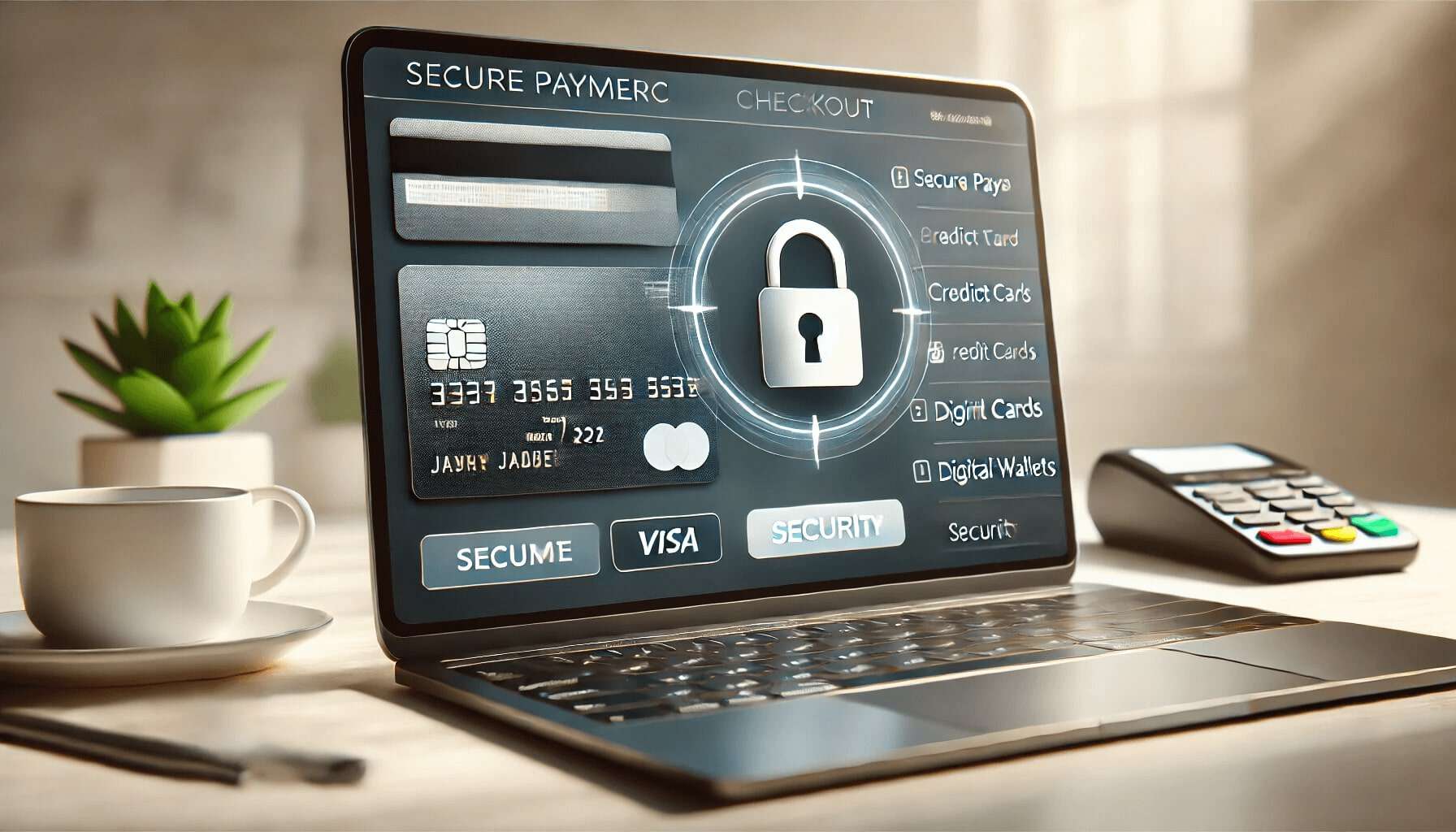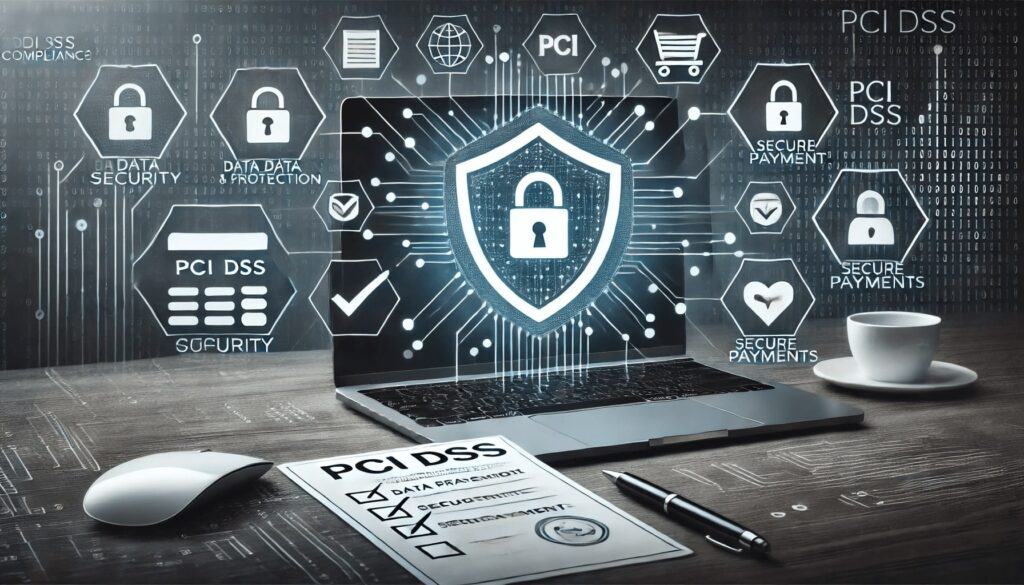
By Crystal Hopkins October 9, 2024
In today’s digital age, online transactions have become an integral part of our daily lives. Whether it’s purchasing products, subscribing to services, or making donations, customers expect a seamless and secure payment experience on websites. As an online business owner, ensuring the security of your customers’ payment information is crucial for building trust and maintaining a loyal customer base.
In this article, we will explore the best strategies for ensuring secure payments on your website, covering topics such as understanding the risks, implementing SSL/TLS encryption, PCI DSS compliance, two-factor authentication, tokenization, fraud detection and prevention, regular security audits, and educating customers about safe payment practices.
Understanding the Risks: Common Threats to Payment Security

Before diving into the strategies for securing payments on your website, it is essential to understand the common threats that can compromise payment security. Cybercriminals employ various techniques to exploit vulnerabilities and gain unauthorized access to sensitive payment information. Some of the common threats include:
- Phishing Attacks: Phishing attacks involve tricking users into revealing their personal and financial information by posing as a legitimate entity. These attacks often come in the form of deceptive emails, messages, or websites that mimic trusted brands.
- Malware and Ransomware: Malicious software, such as keyloggers and ransomware, can infect users’ devices and capture sensitive information, including payment card details. Ransomware can also encrypt files and demand a ransom for their release.
- Man-in-the-Middle Attacks: In a man-in-the-middle attack, an attacker intercepts the communication between a user and a website to eavesdrop on or modify the data being transmitted. This can lead to the theft of payment information.
- SQL Injection: SQL injection is a technique where attackers exploit vulnerabilities in a website’s database to execute malicious SQL queries. This can result in unauthorized access to sensitive payment data stored in the database.
Implementing SSL/TLS Encryption: Safeguarding Data Transmission
One of the fundamental strategies for ensuring secure payments on your website is implementing SSL/TLS encryption. SSL (Secure Sockets Layer) and its successor TLS (Transport Layer Security) are cryptographic protocols that establish a secure connection between a web server and a user’s browser. This encryption ensures that the data transmitted between the two parties remains confidential and cannot be intercepted or tampered with by attackers.
To implement SSL/TLS encryption on your website, you need to obtain an SSL/TLS certificate from a trusted certificate authority (CA). This certificate verifies the authenticity of your website and enables the use of HTTPS (Hypertext Transfer Protocol Secure) instead of HTTP. When a user visits your website, their browser checks the validity of the SSL/TLS certificate and establishes a secure connection. This protects sensitive payment information, such as credit card details, from being intercepted during transmission.
PCI DSS Compliance: Meeting Industry Standards for Payment Security

Another crucial aspect of ensuring secure payments on your website is complying with the Payment Card Industry Data Security Standard (PCI DSS). PCI DSS is a set of security standards established by major credit card companies to protect cardholder data and prevent fraud. Compliance with PCI DSS is mandatory for any business that accepts credit card payments.
To achieve PCI DSS compliance, you need to adhere to a set of requirements, including:
- Building and maintaining a secure network: This involves implementing firewalls, using unique passwords, and restricting access to cardholder data.
- Protecting cardholder data: This includes encrypting cardholder data during transmission and storage, as well as securely deleting any unnecessary data.
- Maintaining a vulnerability management program: Regularly updating and patching systems, as well as conducting vulnerability scans and penetration tests, are essential for identifying and addressing security vulnerabilities.
- Implementing strong access control measures: This involves restricting access to cardholder data based on the principle of least privilege, assigning unique IDs to users, and regularly monitoring access.
- Regularly monitoring and testing networks: Implementing logging and monitoring mechanisms, as well as conducting regular security testing, helps detect and respond to security incidents promptly.
By complying with PCI DSS, you demonstrate your commitment to protecting your customers’ payment information and reduce the risk of data breaches and fraud.
Two-Factor Authentication: Adding an Extra Layer of Protection

Two-factor authentication (2FA) is an additional security measure that adds an extra layer of protection to the payment process on your website. With 2FA, users are required to provide two forms of identification to verify their identity before completing a transaction. This typically involves something the user knows (such as a password) and something the user possesses (such as a mobile device).
Implementing 2FA on your website can significantly reduce the risk of unauthorized access to user accounts and payment information. Even if an attacker manages to obtain a user’s password, they would still need access to the user’s second factor (e.g., a unique code sent to their mobile device) to complete a transaction. This adds an additional barrier that makes it much harder for attackers to compromise payment security.
Tokenization: Securing Payment Card Information
Tokenization is a technique that replaces sensitive payment card information, such as credit card numbers, with unique tokens. These tokens are randomly generated and have no intrinsic value, making them useless to attackers even if intercepted. The actual payment card data is securely stored in a tokenization system, which can only be accessed by authorized parties.
When a user makes a payment on your website, their payment card information is sent to a tokenization system, which generates a token and associates it with the user’s card data. The token is then returned to your website, where it is used for transaction processing. By implementing tokenization, you eliminate the need to store sensitive payment card information on your servers, reducing the risk of data breaches and minimizing your PCI DSS compliance scope.
Fraud Detection and Prevention: Identifying and Stopping Suspicious Transactions
Fraud detection and prevention mechanisms are essential for ensuring secure payments on your website. These mechanisms help identify and stop suspicious transactions before they can cause financial losses or compromise payment security. Some common fraud detection and prevention techniques include:
- Real-time transaction monitoring: Implementing real-time monitoring systems that analyze transaction data for suspicious patterns or anomalies can help identify fraudulent transactions as they occur. These systems can flag transactions that deviate from normal user behavior or exhibit characteristics commonly associated with fraud.
- IP geolocation and device fingerprinting: Analyzing the geolocation of the user’s IP address and creating a unique fingerprint of their device can help detect and prevent fraudulent transactions. If a transaction originates from an unexpected location or a device with a suspicious fingerprint, it can be flagged for further investigation.
- Velocity checks: Velocity checks involve monitoring the frequency and volume of transactions from a particular user or IP address. Unusually high transaction rates or excessive transaction amounts can indicate fraudulent activity and trigger additional scrutiny.
- Address verification system (AVS): AVS compares the billing address provided by the user during the payment process with the address on file with the card issuer. If there is a mismatch, it can indicate potential fraud.
By implementing robust fraud detection and prevention mechanisms, you can minimize the risk of financial losses and protect your customers’ payment information.
Regular Security Audits: Ensuring Ongoing Protection
Regular security audits are crucial for ensuring ongoing protection of your website’s payment infrastructure. Security audits involve assessing your website’s security controls, identifying vulnerabilities, and implementing necessary remediation measures. These audits can be conducted internally or by engaging third-party security professionals.
During a security audit, various aspects of your website’s payment infrastructure are evaluated, including network security, server configurations, application vulnerabilities, and compliance with industry standards such as PCI DSS. By conducting regular security audits, you can proactively identify and address any weaknesses or vulnerabilities that could be exploited by attackers.
Educating Customers: Promoting Safe Payment Practices
While implementing robust security measures on your website is essential, educating your customers about safe payment practices is equally important. Many security breaches occur due to user negligence or lack of awareness. By providing clear and concise guidelines on safe payment practices, you can empower your customers to protect their payment information and reduce the risk of fraud.
Some key points to include in your customer education efforts are:
- Strong password practices: Encourage customers to use strong, unique passwords for their accounts and avoid reusing passwords across multiple websites. Educate them about the importance of regularly updating passwords and using password managers to securely store and manage their credentials.
- Phishing awareness: Teach customers how to identify phishing emails, messages, and websites. Provide examples of common phishing techniques and advise them to be cautious when clicking on links or providing personal information.
- Secure Wi-Fi usage: Advise customers to avoid making payments or accessing sensitive information over public Wi-Fi networks, as these networks are often insecure and can be easily intercepted by attackers.
- Regular account monitoring: Encourage customers to regularly review their account activity and report any suspicious transactions or unauthorized access immediately. Provide instructions on how to set up transaction alerts and monitor their payment card statements for any discrepancies.
By educating your customers about safe payment practices, you can create a more secure online environment and foster trust in your brand.
FAQs
Q.1: What is SSL/TLS encryption, and why is it important for secure payments?
SSL/TLS encryption is a cryptographic protocol that establishes a secure connection between a web server and a user’s browser. It ensures that the data transmitted between the two parties remains confidential and cannot be intercepted or tampered with by attackers. SSL/TLS encryption is important for secure payments because it protects sensitive payment information, such as credit card details, from being intercepted during transmission.
Q.2: What is PCI DSS compliance, and why is it necessary for online businesses?
PCI DSS compliance refers to adhering to a set of security standards established by major credit card companies to protect cardholder data and prevent fraud. Compliance with PCI DSS is necessary for online businesses that accept credit card payments to demonstrate their commitment to protecting customers’ payment information and reduce the risk of data breaches and fraud.
Q.3: What is two-factor authentication, and how does it enhance payment security?
Two-factor authentication (2FA) is an additional security measure that requires users to provide two forms of identification to verify their identity before completing a transaction. This typically involves something the user knows (such as a password) and something the user possesses (such as a mobile device). 2FA enhances payment security by adding an extra layer of protection, making it much harder for attackers to compromise payment security even if they obtain a user’s password.
Q.4: What is tokenization, and how does it secure payment card information?
Tokenization is a technique that replaces sensitive payment card information, such as credit card numbers, with unique tokens. These tokens are randomly generated and have no intrinsic value, making them useless to attackers even if intercepted. The actual payment card data is securely stored in a tokenization system, which can only be accessed by authorized parties. Tokenization secures payment card information by eliminating the need to store sensitive data on your servers, reducing the risk of data breaches and minimizing your PCI DSS compliance scope.
Conclusion
Ensuring secure payments on your website is of utmost importance in today’s digital landscape. By understanding the risks, implementing SSL/TLS encryption, complying with PCI DSS, using two-factor authentication, implementing tokenization, employing fraud detection and prevention mechanisms, conducting regular security audits, and educating customers about safe payment practices, you can create a secure payment environment that instills trust in your customers.
By prioritizing payment security, you not only protect your customers’ sensitive information but also safeguard your reputation and build a loyal customer base.